Gas density
High-voltage transmission: Safe and without interruption with Trafag density monitors
High-voltage transmission: Safe and without interruption with Trafag density monitors
In Trafag devices, the insulating gas density is monitored according to the principles of the reference chamber or quartz vibrating fork. Both methods are characterized by highest reliability and accuracy. In addition, the devices can be operated perfectly in temperature and pressure fluctuating pressure chambers. The systems can be operated safely and without interruption even during maintenance and inspection work. And Trafag is already gearing up to solve further challenges technically: the stricter environmental regulations and the use of climate-neutral gases.
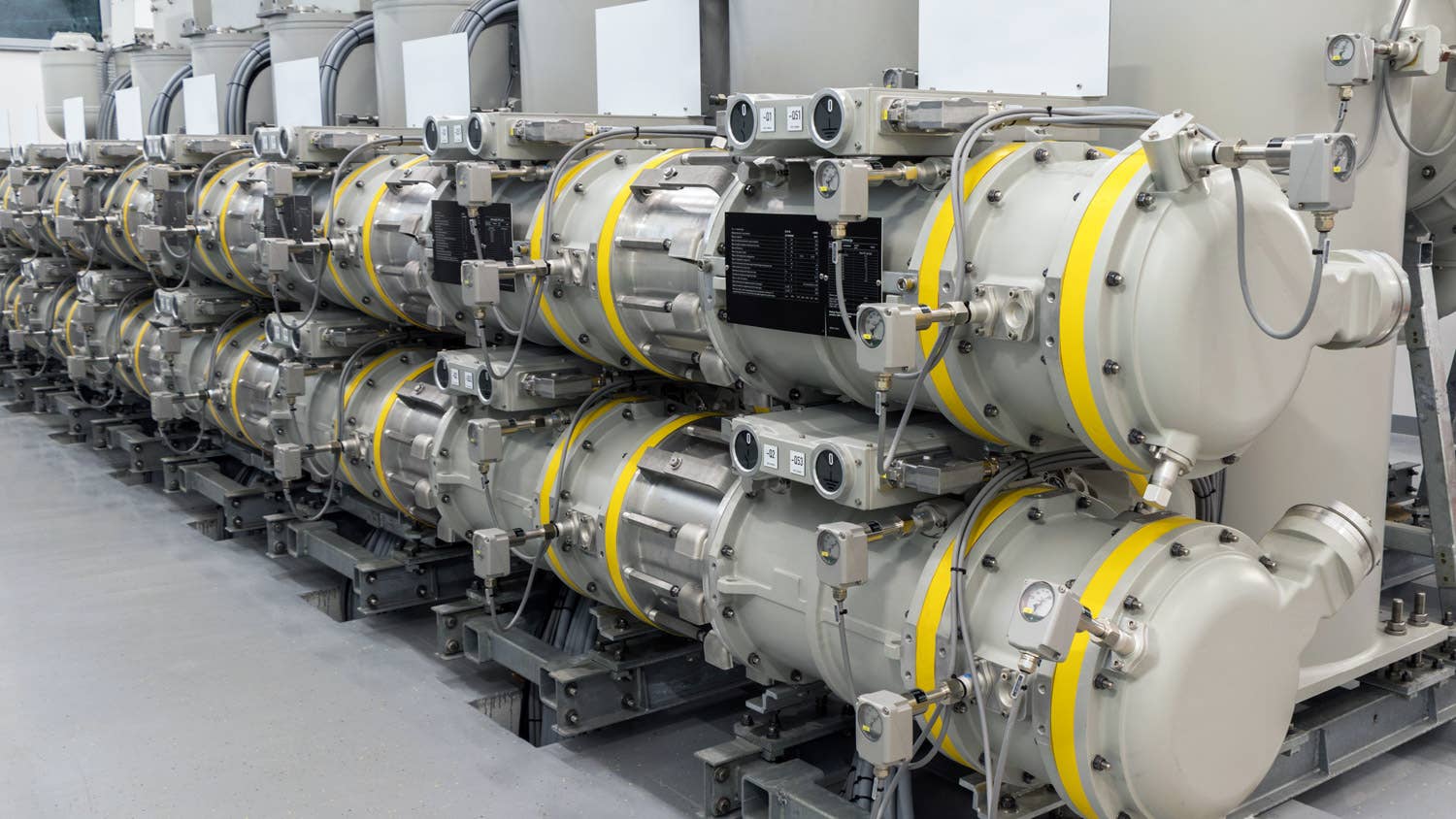

The leap in development of air-insulated high-voltage switchgear (AIS) from the size of a football field to those requiring only ten percent of the space previously occupied took place in ever larger steps from the 1980s onwards. This was also made possible thanks to innovative density monitors from Trafag AG: the basis for this is that the high-voltage components were installed in pressure chambers in which a highly compressed and efficient insulating gas prevents or extinguishes arc faults and short circuits.
The gas sulfur hexafluoride (SF6) has the best insulation and extinguishing effect at high and extra-high voltages (66 to >1000 kV). However, SF6 exceeds the greenhouse gas effect of CO2 by a factor of 23,500. Therefore, no gas must be allowed to escape from the switchgear. Regulators in all countries place high demands on the monitoring of SF6 gas. In cooperation with the well-known manufacturers of switchgear, Trafag AG developed the reference chamber system for monitoring the gas density in the 1980s, which offers higher accuracy than conventional manometer principles and prevents avoidable false alarm.
Today, the operators of high-voltage switchgear are facing new challenges. On the one hand, the electricity utilities are striving to operate their plants permanently without interruptions. To this end, the industry is increasingly relying on additional, continuous electronic density measurement and predictive maintenance instead of exclusively on warning and shutdown mechanisms as in the past. On the other hand, the sizes of the plants are to be further reduced, resulting in smaller diameters and insulation areas. And finally, more climate-friendly insulating gas substitute mixtures are visibly taking the place of SF6. And once again, it is Trafag AG that is already offering the right solutions today.
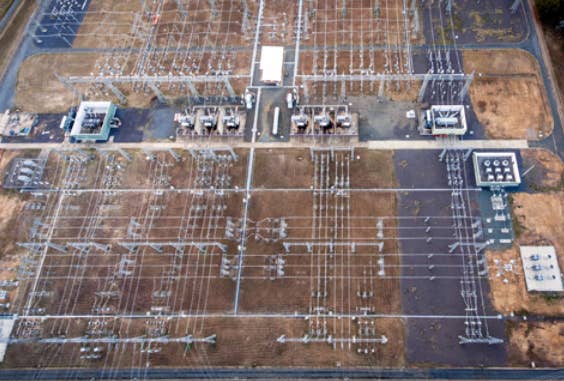

Air-insulated switchgear (AIS) (pictured above) has given way to very compact gas-insulated switchgear (GIS) in locations where space is limited (pictured below)
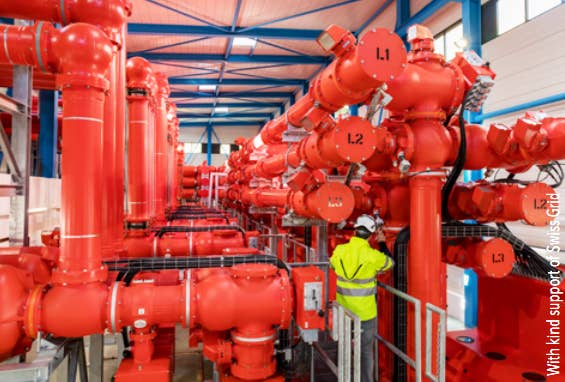

Accurate density monitoring enables more compact plants
Trafag has set the quality and accuracy requirements of the density monitors in such a way that the alarm points are limited to a narrow range. The higher the reliability and accuracy of the systems, the smaller the tolerances in which the plant can be used. Insulation distances can thus be smaller, the complete plant can be optimized to meet the requirements and its size can be reduced: the site area required for switchgear shrinks. Inaccurate density measurement requires larger volumes, while precise density measurement enables tailor-made plant sizes and compact areas.
Pressure drop and thus gas density losses endanger the plant safety
The operational reliability and operational safety of gas-insulated high-voltage systems can only be guaranteed if the required insulating gas density is maintained within the pressure compartments. Leakage would endanger the functionality and safety of the switchgear and at the same time violate environmental regulations. Regulatory requirements therefore stipulate permanent monitoring of the pressure compartment. The systems must remain tight at all times, and the density monitors must function with specified precision.
As long as there is no leakage in the gas-insulated pressure chamber, the number of gas molecules in the closed space remains the same. The number of molecules (density), pressure and temperature interact physically, based on so-called isochores. The higher the temperature in a closed, gas-filled space, the higher the pressure. Gas-insulated systems are also installed outdoors, where temperatures can range from -40°C to +60°C. It is therefore imperative that the entire system is temperature-compensated, as otherwise the density display would show higher values when exposed to sunlight and lower values when exposed to frost - even though the same number of molecules are in the system.
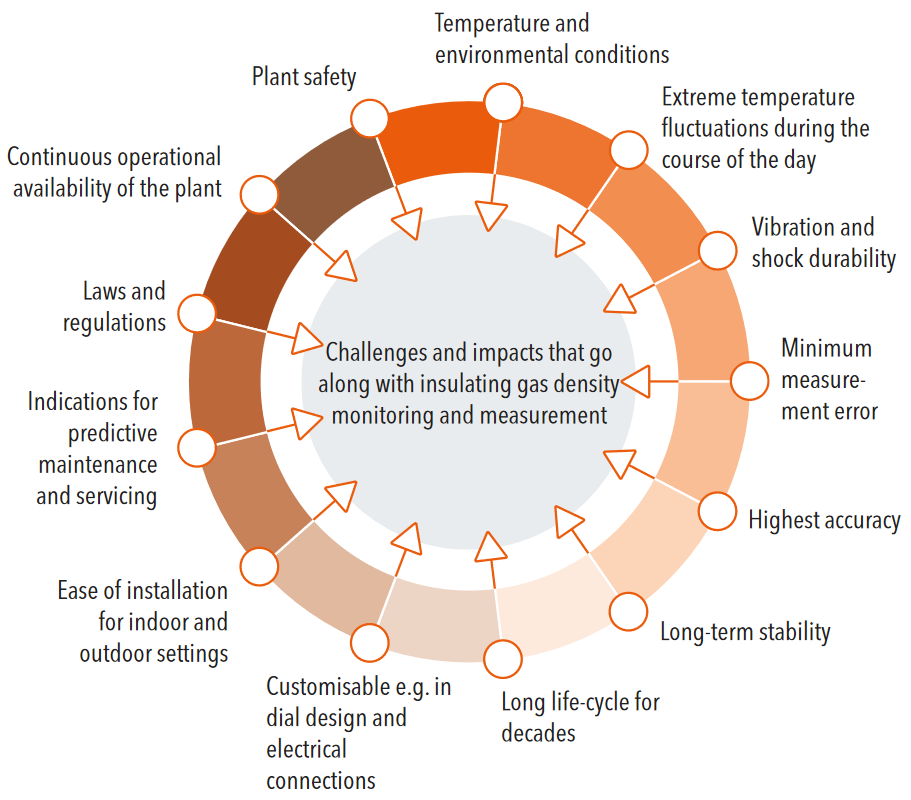

Accurate - and thus also safe - monitoring and measurement of insulating gas density in high-voltage technology: environmental influences, operational safety or efficient maintenance, regulations - these are just some of the challenges faced by operators of high-voltage switchgear
Climate-neutral alternative gases instead of SF6
The insulation gas SF6 , which is predominantly used today, is attributed a 0.5 percent share of global warming. Many operators are therefore endeavoring to equip new plants with climate-neutral alternative gases from the outset. Existing plants, of which hundreds of thousands are in operation worldwide, are also being partially retrofitted. With the alternative gases, only the type and number of molecules used for electrical insulation change. Trafag AG can supply the appropriate instruments for all alternative gases used today, which comply with existing standards. The Trafag instruments are adjusted at the factory for the specific gas and the specific filling pressure. The instruments are then sealed and ready for use.
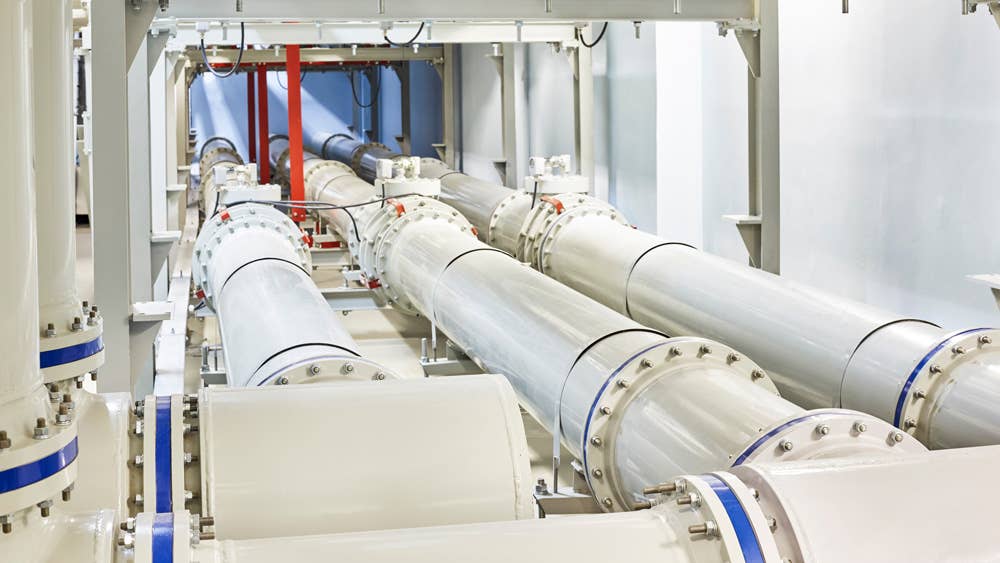

Temperature compensated pressure gauges are too inaccurate
Pressure gauges used to be the standard for monitoring systems. Due to their simple mechanical design with a Bourdon tube and bimetallic temperature compensation, they are usually less expensive but are less precise due to their design. Measurements with a Bourdon tube must be temperature-compensated in each case so that the actual density values can be verified. The bimetallic elements used for temperature compensation must be specifically adapted to the respective insulating gas. In the case of large temperature fluctuations, this mechanism leads to higher measurement inaccuracies. At particularly high or low temperatures, the shift in accuracy with such bimetal-compensated pressure gauges is disproportionately high. The result is avoidable false alarms.
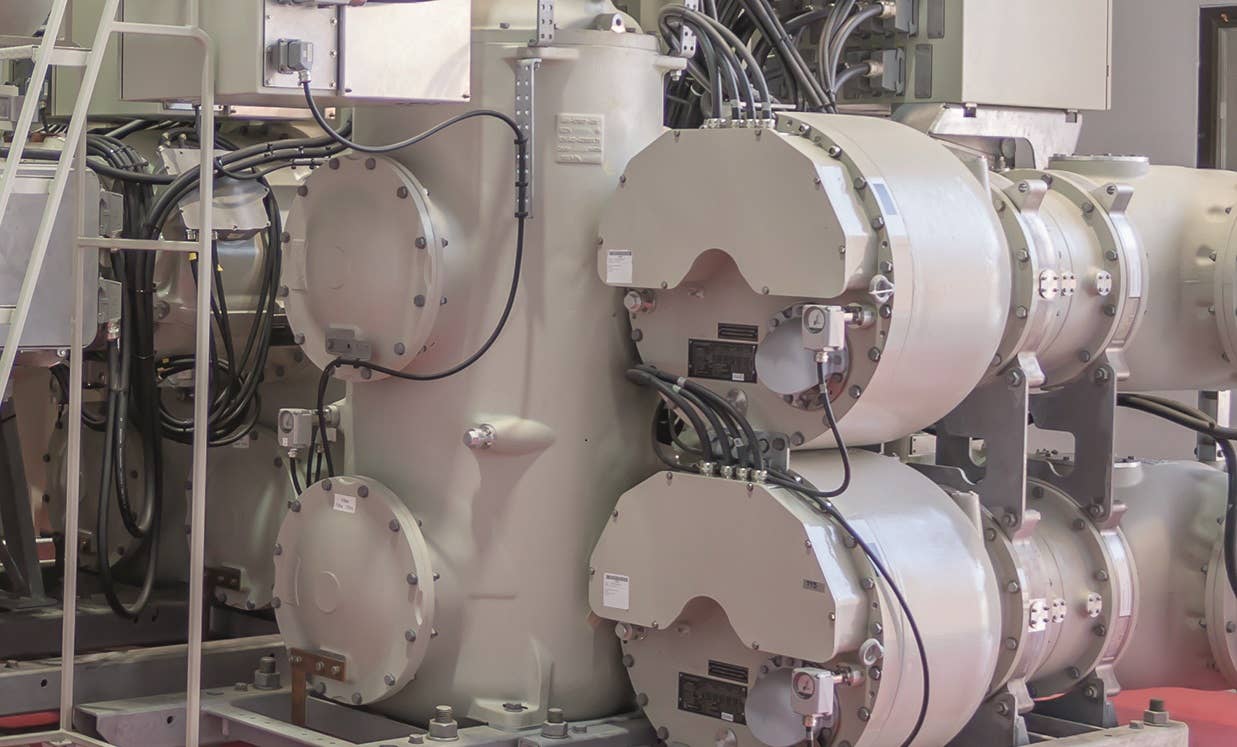

Higher accuracy with the reference chamber principle
To counteract the inaccuracies of conventional density gauges, Trafag developed the reference chamber principle based on pressure switch technology. Trafag's principle is simple - but ingenious: In the gas density monitors, a reference gas is used in the reference chamber that has the same properties as the insulation gas in the components of the switchgear. Reference gas and insulation gas are thermally coupled and at the same temperature, so that pressure fluctuations due to temperature changes are eliminated. Consequently, the monitors are fully temperature-compensated by design and thus achieve a higher accuracy than temperature-compensated pressure gauges. Today, the fourth generation of instruments is already on the market.
Each instrument has a service life of more than 25 years. In addition, these instruments itself are maintenance-free. If the pressure chamber to be monitored effectively loses insulation gas, i.e. pressure escapes, the reference chamber system mechanically actuates switching points via microswitches. At the first alarm level, insulation gas must be refilled. Only a rapid drop in pressure causes the system to shut down, which is triggered by appropriate and reliable switching of further microswitches.
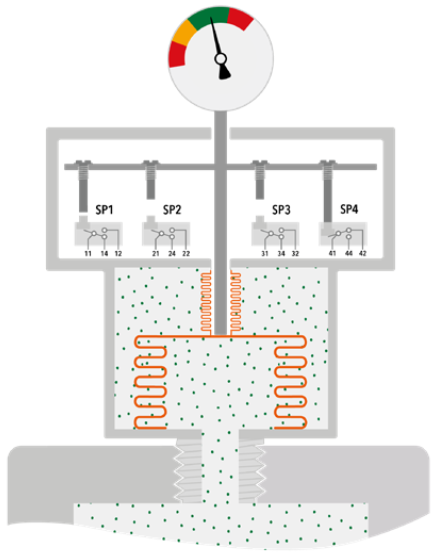

Reference chamber principle simplified. Built into Trafag's products, they enable the operators of high-voltage switchgear to ensure uninterrupted and safe operation
Continuous density measurement based on oscillating quartzes
In recent years, there has been a growing demand in the power distribution industry for continuous density measurement, which provides real-time information on how much gas is actually being lost and when critical values are reached, so that immediate action can be taken. General problems in the plant can be detected earlier and refilling or, for example, the replacement of O-rings can be initiated in good time in the sense of predictive maintenance.
The conventional method for density measurements consists of a pressure measurement combined with integrated temperature sensor in order to be able to correct the pressure as a function of temperature. Trafag has revolutionised this principle by taking oscillating quartz fork from watch technology and incorporating them into sensors. The oscillation of a quartz in a gas is damped by the number of molecules. The degree of damping is directly proportional to the density. This form of continuous density measurement is significantly more stable and accurate than temperature-compensated pressure measurement.
In the meantime, every fourth density monitor has included a maintenance-free sensor for continuous measuring of the gas density. Either the measurement signal is transmitted via a current signal or the sensor system has a digital Modbus output. The operator's control system then calculates from the transmitted values how much gas is currently in the system and analyses which actions, if any, are necessary.
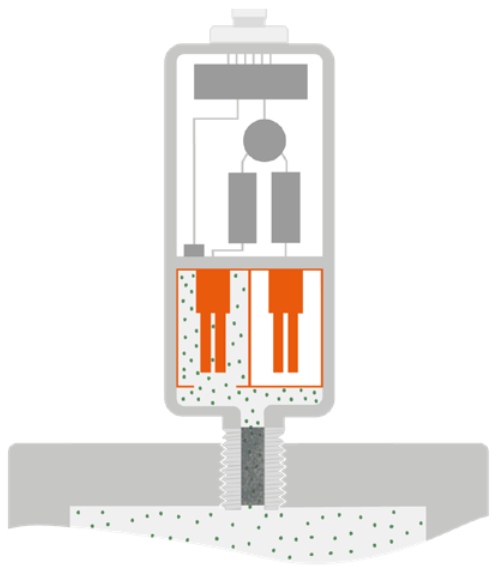

Reference chamber principle simplified. Built into Trafag's products, they enable the operators of high-voltage switchgear to ensure uninterrupted and safe operation
Uninterrupted operation - thanks to refill and test valves
The regular inspection of gas-insulated switchgear is regulated by various national regulations, in Europe, for example, by the F-Gas Regulation. According to this, the density monitor must be checked every six years for plants that were commissioned from 2017 on and contain more than 22 kilograms of SF6 gas. Many plant operators have already switched on their own to carrying out the inspection every two to four years. To do this, the affected part of the plant previously had to be switched off and the insulating gas to be captured. The gas density monitor is dismounted and connected to a separate test device.
Trafag is the first supplier to develop an integrated valve that enables monitor testing during operation without having to shut down the system. The gas density monitor is combined with a refill and test valve and welded tightly, making the system leak-proof. With the help of the valve, the unit can be checked for operational funtionallity during operation and gas can be refilled if necessary without having to shut down the system.


In normal operation, the test connection is tightly sealed from the outside. If a test instrument is connected, an direct connection is established between the test instrument and the reference chamber of the density monitor.
Questions about gas density or our products?
Typical applications for SF6 and alternative insulating gas monitoring
- Gas-insulated switchgear (GIS) and switching stations
- Circuit breakers (generator, live and dead tank)
- Gas insulated transmission lines (GIL)
- Gas insulated transformers (GIT)
Results
8 Articles found
-
Gas density monitor with switching contacts87x6Designation of application: Density monitoring in insulating and quenching gas
-
 Arctic gas density monitor with switching contacts87x8Designation of application: Density monitoring in insulating and quenching gas
Arctic gas density monitor with switching contacts87x8Designation of application: Density monitoring in insulating and quenching gas -
Hybrid Gas Density Monitor with analogue output878xDesignation of application: Gas Density Monitor for SF6 and other gases with output signal for continuous monitoring
-
Hybrid Gas Density Monitor RS485/MODBUS879xDesignation of application: Gas Density Monitor for SF6 and other gases with output signal for continuous monitoring
-
Gas density sensor with analog output8774Designation of application: Density sensor for SF6 and other gases
-
Gas density sensor with Modbus output8775Designation of application: Density sensor for SF6 and other gases
-
-
Gas Density Monitor with switching contacts8719







